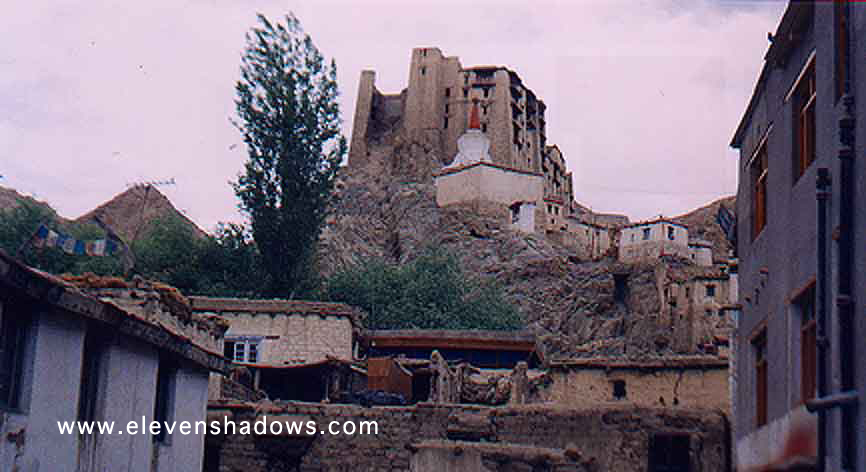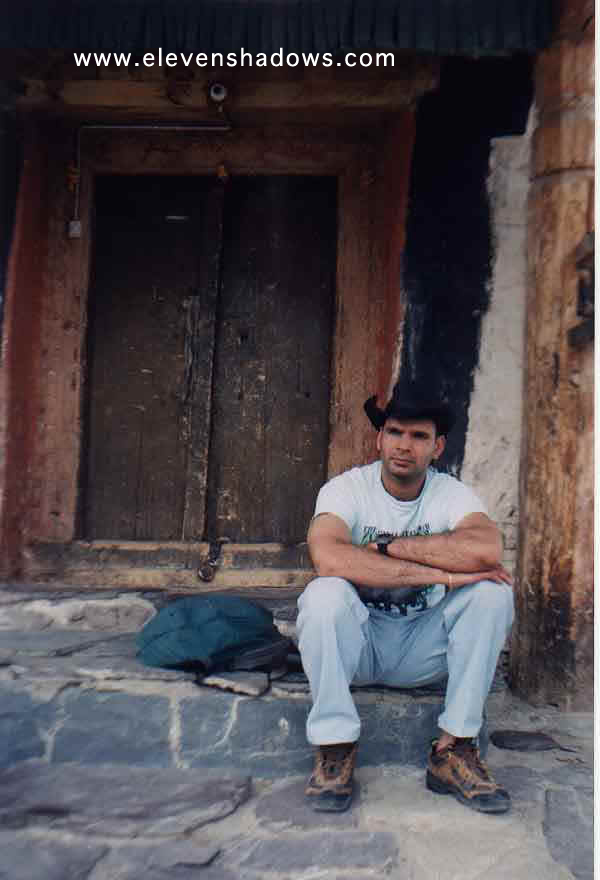|
|
Leh Palace in Ladakh, towering over downtown Leh, was built
in the 17th Century, but curiously now remains deserted and dilapidated.
Architecturally, it bears noticeable resemblance to the Potala Palace in
Lhasa, Tibet. Leh, the capital of Ladakh, is now
somewhat a
tourist trap. It's not Waikiki Beach, but
some of the storekeepers can be a bit on the aggressive side. There are some
great restaurants, such as the Tibetan Kitchen, that have great food and a very
comfortable atmosphere. Changspa, with its peaceful guest homes and Buddhism
study centers just 15 minutes from downtown Leh, is more peaceful. |
|
Mani stones, such as these in Diskit, Nubra
Valley, are frequently found along pathways, roadsides, and walkways
throughout Ladakh. These are anywhere between 40-100 years old, and have
either the eight auspicious symbols or "Om mani padme hum" carved on them.
For some reason, lots of people ask whether I took one of these home with
me. The answer is no. |
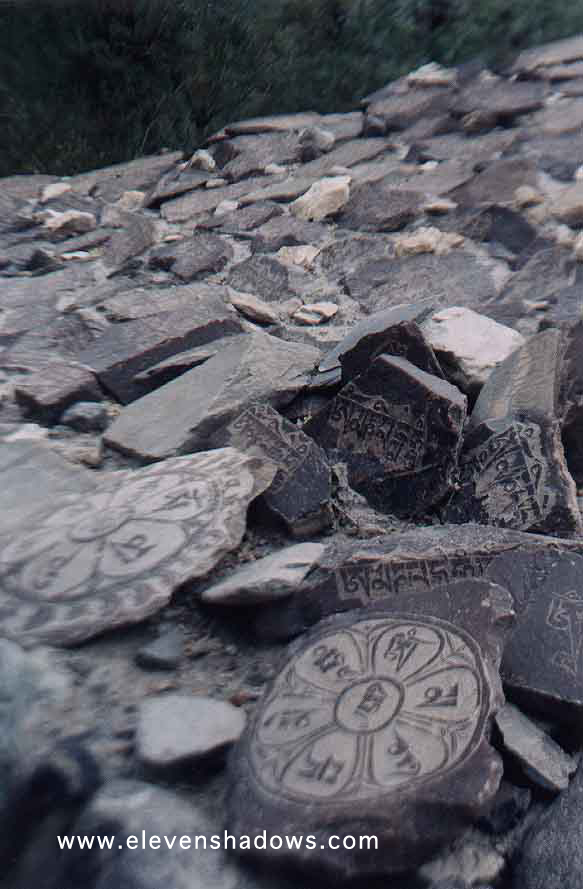 |
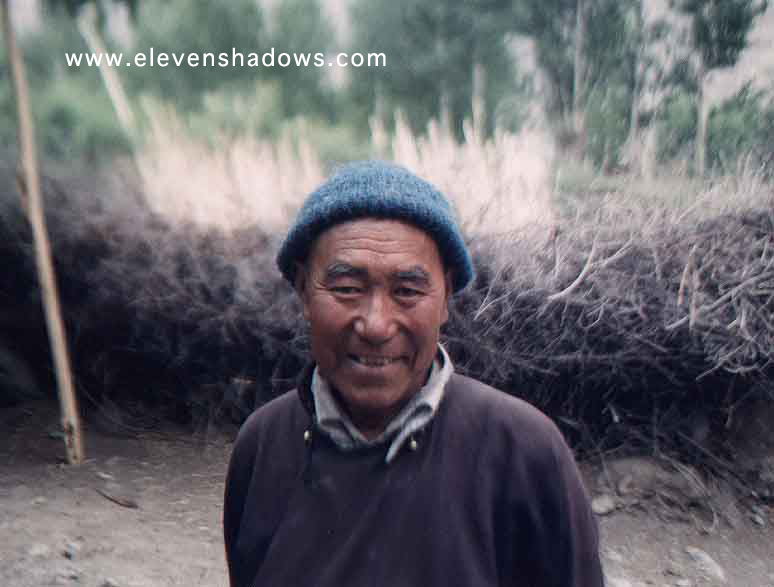 |
Ladakhi farmer, Diskit, Nubra Valley, Ladakh. Here in Nubra Valley and other places in remote Ladakh, we were frequently invited in for tea and bread and chang (barley beer) frequently, and camped on farmer's land. |
|
Even common, everyday items can have interesting designs and
great attention to detail in Ladakh, such as these set of keys that open the main hall at
Diskit Gompa in Nubra Valley. |
|
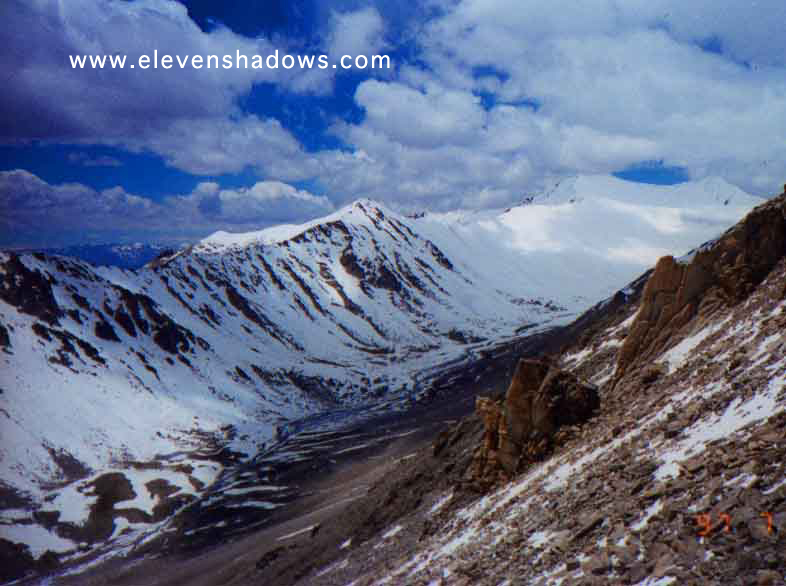 |
The Indian Himalayan mountain chain near Kardung
La ("la" means "pass" in Ladakhi). This picture was taken at about
16,000-17,000 feet in elevation. Photo: Tom Chand |
|
I traveled through Ladakh with my friend Tom, shown here in front of Samtanling Gompa in Sumur, Nubra Valley. The Gompa is over 150 years old, and was inaugurated by the Dalai Lama in 1962. Nubra Valley is a beautiful green valley at about 10,500 ft. The run-off from the snow-capped peaks surrounding this fertile valley is carefully irrigated by the Ladakhi farmers. What's also fascinating is that you can literally walk only five minutes from the greenery and see camels roaming around on sand dunes with towering snowy peaks in the distance, a fascinating juxtaposition. |
|
|
|
Ladakhi kids in front of Samtanling Monastery, Sumur, Nubra Valley. |
|
We camped in a farmer's field on the way to Pongong Tso, easily the bluest lake I've ever seen. The farmer's children are holding pictures of the Dalai Lama that I had just given the family minutes before Tom took this picture. The Dalai Lama's picture is revered all throughout Ladakh. When we gave the family the pictures, they looked almost awestruck, and held the picture to their foreheads in silence. |
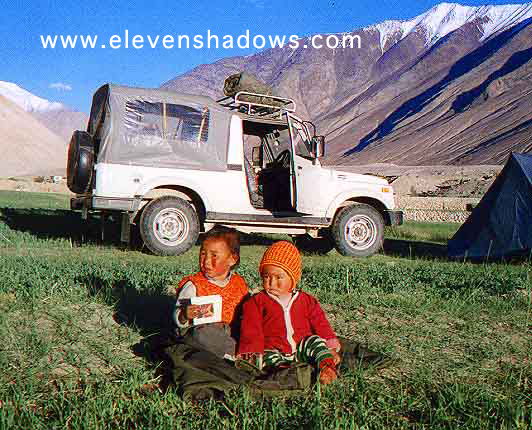 |
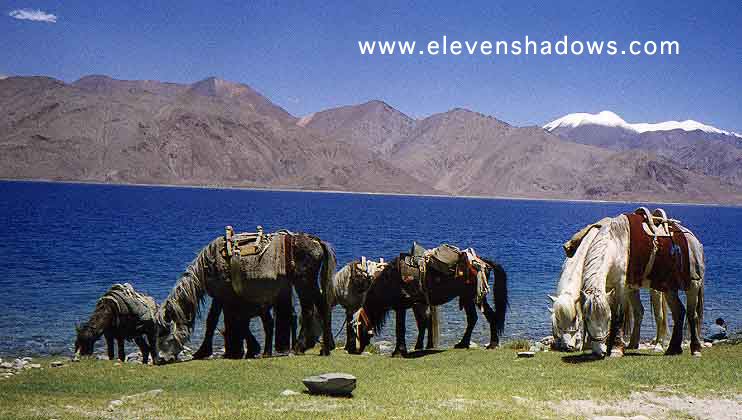 |
Horses grazing in front of the beautiful Pongong Tso ("tso" is Ladakhi for "lake"). Pongong Tso, which at approximately 14,500 ft. is the highest salt water lake in the world. This pencil-shaped lake has the bluest water I have ever seen. A full three-fourths of this lake is actually in Tibet. |
|
This spectacular flowering meadow greeted us as we rounded the corner from Chemrey Monastery on our way back to Leh from Pongong Tso. One of the things that struck me the most about the landscapes of Ladakh was the stark contrast in both the textures and the colors. Tom flew back to Delhi, while I stayed in Ladakh a little while longer, eventually traveling to Kashmir. I had heard from a number of tourists and Indians that Kashmir was safe. I also had injured my back, and figured that staying on a houseboat in Kashmir might be just the sort of relaxation I needed. I got that - and much more!
|
 |
Go to Kashmir
1997 Kashmir Page
